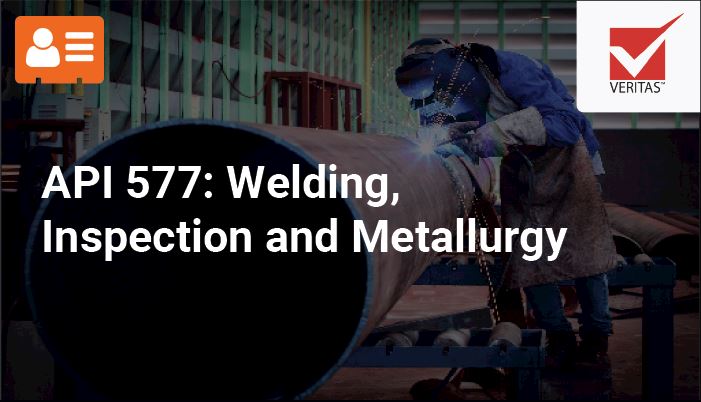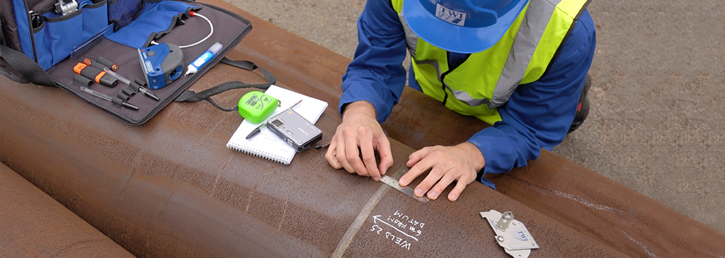How Regular Welding Inspection Madison Can Save You Money And Time
How Regular Welding Inspection Madison Can Save You Money And Time
Blog Article
Exploring Advanced Tools and Techniques for Accurate Welding Examination
In the realm of welding assessment, the quest of accuracy and reliability is critical, spurring the development of innovative devices and approaches. Laser scanning advancements and automatic examination systems, furnished with man-made intelligence, are redefining the landscape by decreasing human mistake and boosting safety and security actions.
Ultrasonic Checking Technologies
Ultrasonic screening developments frequently stand for the forefront of improvements in welding assessment modern technologies. These developments have considerably enhanced the capacity to discover and evaluate gaps within welded structures, making certain improved integrity and safety.

In addition, improvements in software formulas for data analysis have actually boosted the accuracy of problem detection and sizing. Automated ultrasonic screening systems now offer high-resolution imaging, enabling in-depth assessments of weld high quality. These systems are frequently incorporated with innovative visualization devices, which help with the analysis of outcomes.
Radiographic Inspection Methods
While ultrasonic testing innovations have actually established a high standard in non-destructive assessment, radiographic assessment strategies remain to play an integral role in welding examination by supplying special insights into material stability. Radiographic screening (RT) uses the use of X-rays or gamma rays to permeate materials, developing a radiograph that visually represents the inner framework of a weld. This imaging capacity is vital for spotting subsurface flaws such as porosity, inclusions, and splits that might not be noticeable via surface assessments.
The process entails placing a radiation resource on one side of the weld and a detector on the contrary side. Variations in product density and density impact the depletion of the rays, generating a different picture that exactly marks defects. RT is specifically beneficial for examining complex geometries and thick sections where other techniques may fail.
Despite its efficiency, radiographic assessment has to be conducted with stringent adherence to safety protocols because of the harmful nature of ionizing radiation. Additionally, the analysis of radiographs requires knowledgeable workers, as the quality of the analysis straight affects the dependability of the examination. As a result, continuous innovations in electronic radiography are improving photo clearness and interpretation performance, strengthening RT's vital duty in making sure weld high quality.
Laser Scanning Breakthroughs
Accepting laser scanning modern technology in welding examination has changed the assessment of weld top quality and honesty. Unlike traditional inspection methods, laser scanning gives rapid information acquisition, significantly enhancing the effectiveness and precision of weld assessments.
Laser scanning advances have led to considerable enhancements in detecting and characterizing surface area flaws such as porosity, absence of blend, and damages. The high-resolution data makes it possible for assessors to carry out thorough evaluations, making sure that welds fulfill stringent industry standards. Moreover, this technique sustains the advancement of digital records, helping with lasting quality assurance and traceability.
In addition, laser scanning modern technology integrates flawlessly with software program options made for automated flaw detection and analysis. The resultant information can be quickly shared and assessed, advertising collective decision-making procedures. As industries continue to demand greater standards for weld quality, laser scanning remains at the forefront, using unparalleled accuracy and performance in welding examination.
Automated Evaluation Equipments

Automated assessment systems her response use the benefit of consistency, eliminating human error and subjectivity from the inspection procedure. They are made to run in different settings, from manufacturing floorings to remote area websites, making sure extensive coverage. Welding Inspection Madison. These systems can be programmed to comply with specific welding requirements and criteria, supplying detailed records and documentation for quality assurance objectives
In top article addition, the integration of cloud-based platforms assists in the storage and evaluation of huge amounts of assessment information. This makes it possible for fad evaluation and anticipating maintenance, enabling suppliers to resolve potential concerns before they intensify. The fostering of automated inspection systems is an essential step in the direction of enhancing the reliability and efficiency of welding procedures in commercial applications.

Enhancing Safety and Effectiveness
A considerable facet of boosting safety and efficiency in welding assessment lies in the integration of innovative technologies that enhance procedures and mitigate dangers. The fostering of advanced non-destructive testing (NDT) methods, such as ultrasonic testing, phased array ultrasonic screening (PAUT), and radiographic screening, plays a critical duty in guaranteeing structural honesty without compromising the security of the workers involved. These methods permit extensive inspections with minimal downtime, lowering potential dangers connected with typical methods.
Furthermore, the execution of real-time data analytics and artificial imp source intelligence algorithms has transformed the method examination information is interpreted. By using anticipating analytics, prospective problems can be determined before they show up into vital failures, making sure prompt treatments and upkeep. This aggressive technique substantially enhances operational efficiency and security in welding processes.
Moreover, remote inspection innovations, including drones and robotic spiders equipped with high-resolution electronic cameras, make it possible for examiners to examine hard-to-reach locations without exposing them to hazardous problems. This not only improves evaluation accuracy yet also lessens human danger. By leveraging these innovative devices and approaches, industries can accomplish higher security standards and functional performance, ultimately resulting in more lasting and trustworthy welding evaluation methods.
Final Thought
The integration of sophisticated devices and methods in welding inspection dramatically boosts flaw detection and makes sure architectural integrity. These improvements not only boost evaluation performance however likewise add to improved security and quality guarantee in industrial welding applications.

Ultrasonic testing developments regularly represent the leading edge of advancements in welding examination innovations.While ultrasonic testing advancements have established a high criterion in non-destructive evaluation, radiographic assessment methods proceed to play an important duty in welding inspection by offering distinct insights into product stability.Accepting laser scanning modern technology in welding inspection has actually revolutionized the evaluation of weld top quality and honesty. As markets proceed to require greater requirements for weld quality, laser scanning remains at the center, supplying unmatched precision and efficiency in welding examination.
Automated examination systems provide the benefit of consistency, eliminating human mistake and subjectivity from the evaluation process.
Report this page